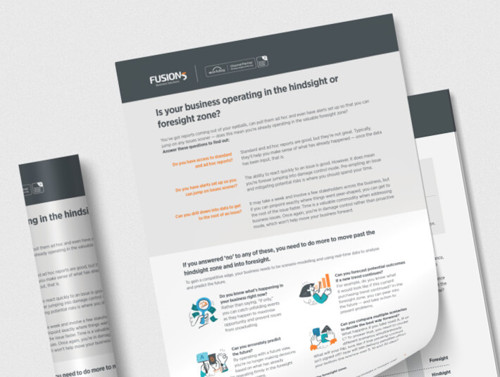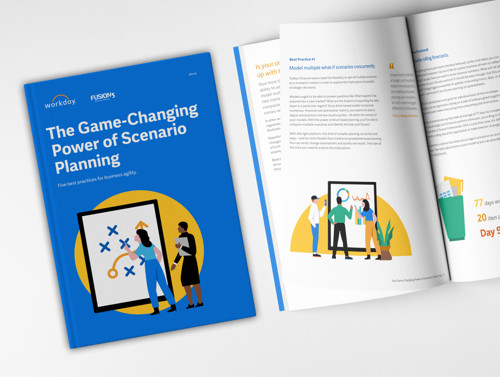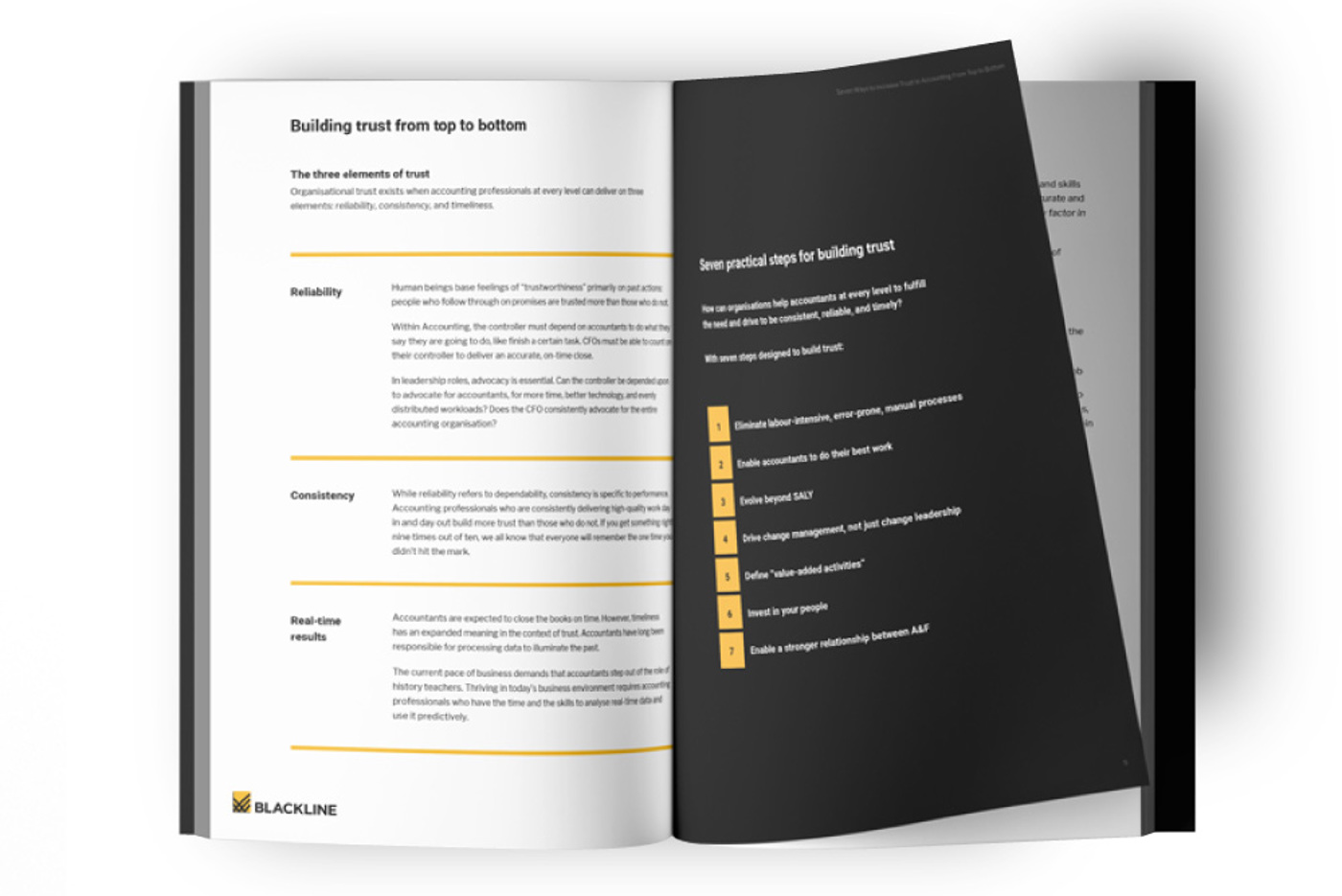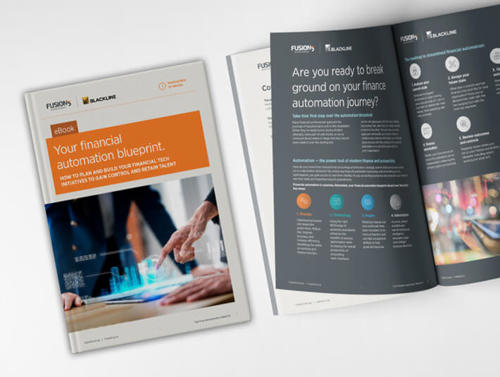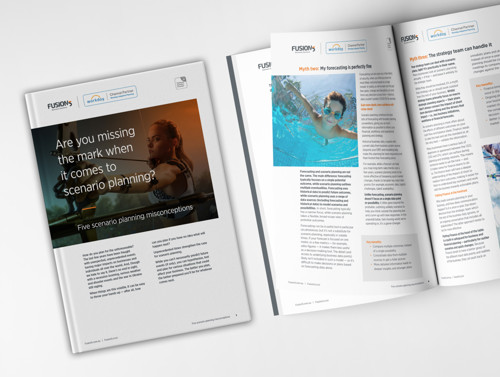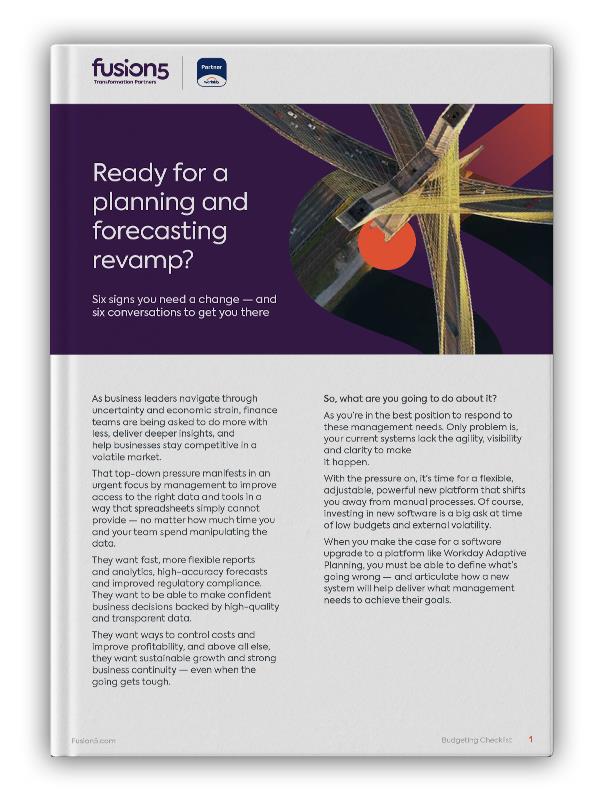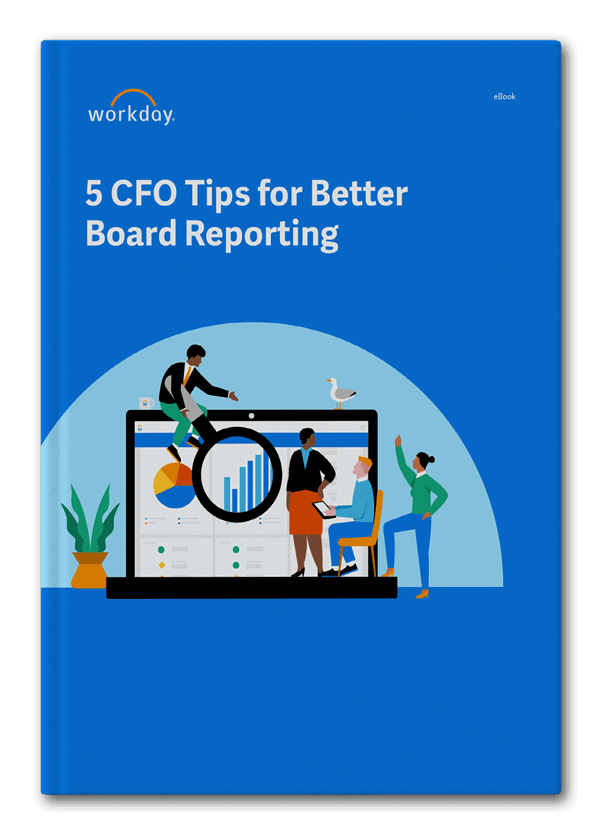If you’ve ever envied your competitor’s capability to rapidly flex, pivot, and respond strongly to challenging or changing circumstances or markets while you’re still evaluating your options, it’s probably because they have something you don’t have. And it’s not a crystal ball, a run of luck, or a penchant for taking risks. It’s much more strategic.
It’s scenario planning.
As the swings and roundabouts of the last few years have proven, scenario (aka what-if) planning has been transformed from a ‘wouldn’t it be great to have this capability at some stage’ to a ‘seriously, we can’t do without this!’
We’ve got great forecasting; isn’t that enough?
To be honest, no, it’s not.
While both are strategic planning methodologies, there’s a fundamental difference between scenario planning and forecasting.
Scenario Planning vs Forecasting
In their blog on Scenario Planning vs. Forecasting, LeadershipNow offered this succinct definition: “Forecasts offer one possible future, whereas scenarios offer multiple possible futures.”
Forecasts use quantitative and often historical data and trends to predict one probable future scenario. It’s a great short-term tool that provides your business with certainty based on known variables in the system. For example, you get a clear picture of the knock-on effect of a supplier’s upcoming price increase.
Whereas scenario planning requires you to look into the future for more than just the most likely outcomes. It describes the potential outcomes of multiple alternative (short- and long-term) scenarios. It is best done using an automated planning solution such as Workday Adaptive Planning which takes the known data you’d utilise from forecasting and combines it with uncertainties, enabling you to minimise risk by anticipating how you can respond to a new situation.
A diverse group of people in a meeting room engaged in discussion around a table with laptops and documents. Two individuals are standing, presenting charts on paper, while others are seated, attentively listening.

For example, what if:
- You can no longer sell to the Chinese market and have 1,000 speciality widgets to shift?
- Half of your workforce is unable to work due to illness?
- You need to build your own components instead of importing them?
When the future is relatively stable and predictable, then yes, forecasting may be all you need. And pre-pandemic and pre-Ukraine, it was a reliable enough way to move forward. But given the complexities of the last few years, few businesses could have foreseen the challenges of supply chain and travel disruption, uncertain financial markets, and shortages of labour – skilled and otherwise.
What’s been the hardest though, is that these issues have overlapped, impacting one another, and often compounding smaller problems.
What kinds of scenario planning are there?
1. Operational scenarios
These deal with the immediate fallout of the scenario eventuating. Operational scenarios will typically outline the short-term potential implications and identify the best way to minimise the impact. Understandably, this is the most popular type of scenario planning.

2. Quantitative scenarios
These financial models present both the best- and worst-case scenarios of certain situations. e.g. – ‘we will sell our entire stock of 1,000 widgets to one business in Norway without discounting’ (Go you!). As opposed to ‘we will need to find new customers and offload the widgets at cost, or even below.’
These models can be updated and adjusted to reflect variables, and you’d generally use them to develop annual business forecasts. The cascading effects of these decisions and their impact on the Profit and Loss, Balance Sheet and Cash Flow statements can also potentially be modelled in these scenario plans.
3. Normative scenarios
These aren’t so much about overcoming problems and more about outlining how you can achieve your big overall goals – your vision. Normative scenarios define and describe how you want to operate in the future.
This model requires more in-depth strategic thinking, and it's commonly used in conjunction with other scenario planning methods by outlining priorities and goals to consider. This can offer significant value when it comes to making decisions about mergers, relocation of work forces, expansion of facilities, etc.
4. Strategic management scenarios
These deal with planning for the landscape you’re operating in. They deal less with your business and more with political, societal, economic, and other global factors that influence your operating environment. They require a considered, well-informed worldview combined with in-depth industry experience and insight. As they are challenging, this type of scenario modelling is often outsourced to specialist futurists.
Some common questions we get about scenario planning (and the answers!)
Q: What are the primary benefits of scenario planning? Well, we’re glad you asked!
Happy engaged Indian business leader motivating diverse staff for work, brainstorming, sharing ideas for project. Mentor, coach, teacher training group of millennial interns, employees

A: Here’s our pick:
- To misquote the boy scouts: You can be prepared! You can feel more confident that you’re ready for anything that might happen.
- Get the big picture with a more holistic view of your organisation’s performance.
- Make more impartial and better-informed decisions based on a broader range of known facts and uncertainties.
- Identify challenges early. The fear of the unknown is often greater than dealing with even an unpalatable probable outcome.
- Improve accuracy. Workday Adaptive Planning assists the calculations of a wider range of possible outcomes – thereby increasing the quality and confidence of budgets, forecasts, and strategic plans.
- Get a head start on your competitors. When you got a plan, you can get organised more quickly and act decisively. You already faced up to the available options, documented the how-to, and can move ahead with whichever what-if scenario comes to fruition.
Q: Which departments should use scenario planning?
A: It’s up to you. It can be done across the whole business or by department. Your finance department will often run scenario planning independently and collaborate when it involves another department.
You should at least consider impacts on other departments. For example, if production is modelled to have less output, it would make sense to model the sales impact and revenue as well.
A man in glasses and a denim shirt sits at a table with a laptop, holding a smartphone and looking frustrated. Papers and an open laptop are in front of him. The setting is a cozy room with large windows and a brick wall.

Q: It all sounds too good to be true. What’s the downside?
A: It takes time and often a number of people, which of course, means money. It can take months to set up; once done, the reviewing and alternative scenarios are much faster, but even then, it’s not a case of set and forget.
You’ll need to apply constant reviews and updates.
Q: What are the basics we need to be aware of or apply?
A: First, you must have the right data. Without accurate data at the right level, you can’t execute on agile planning.
Second, choose the right variables to use at the right time (without overdoing it!).
Third, as a matter of best practice, run at least three scenarios – worst case, medium (status quo) case and best case so you can be prepared.
And lastly, use a break-even analysis to determine what you need to do to continue at the status quo. For example, you’ve been advised that you won’t be able to sell Product X after the second financial quarter. So, what volumes of our remaining products do we need to sell to make up for the sales shortfall and maintain the same level of profitability?
Q: And here’s the big question – can scenario planning really improve our financial recommendations?
A: Yes. But rather than repeat ourselves, check out this blog we prepared earlier.
